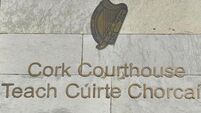Mother and baby homes: Redress scheme must be survivor-focused to avoid mistakes of the past

Prof Conor O'Mahony says we need to learn from the failings of several previous redress schemes such as those for the Magdalene laundries and the symphysiotomy scandal.
The development of the State’s mother and baby homes redress scheme needs an element of transparency to avoid repeating past mistakes that have “left a trail of anger and bitterness” amongst survivors.
That’s according to Conor O'Mahony, director of the Child Law Clinic at University College Cork (UCC). The design of the State's approach also needs some form of public consultation, which could come from an Oireachtas committee hearing or hearings, according to Prof O'Mahony.










